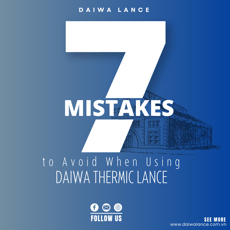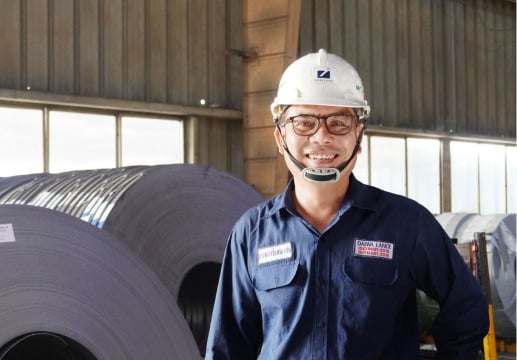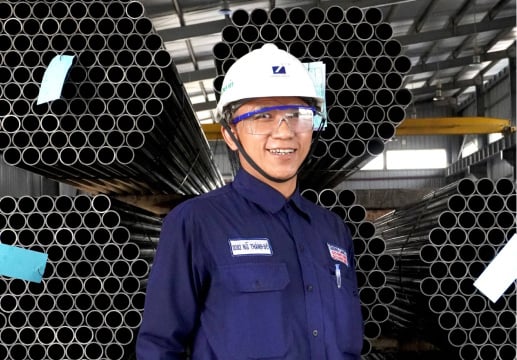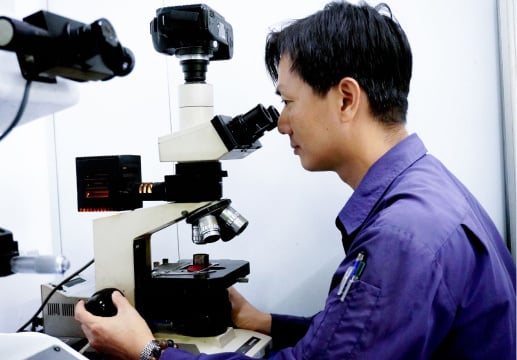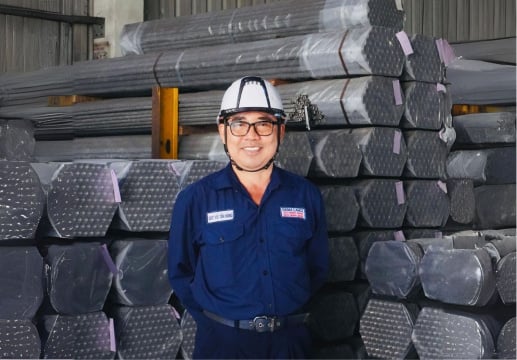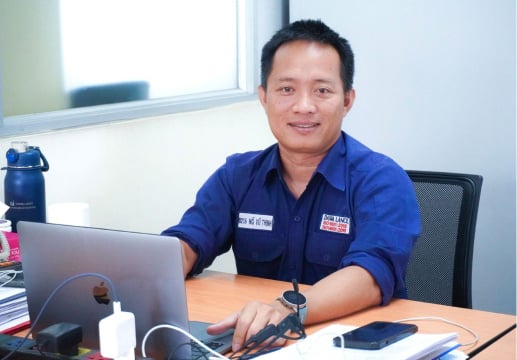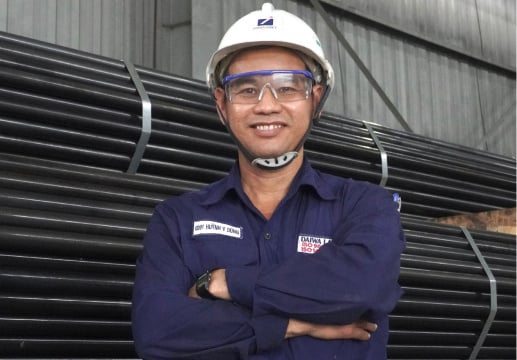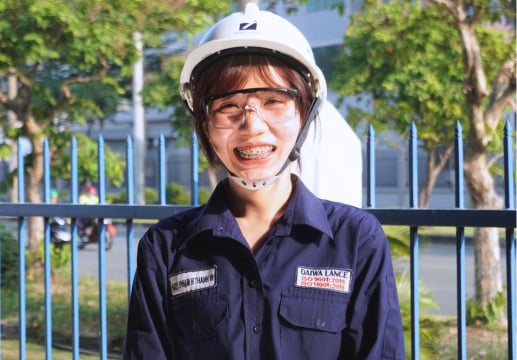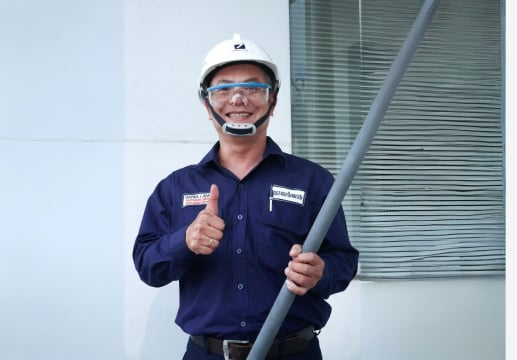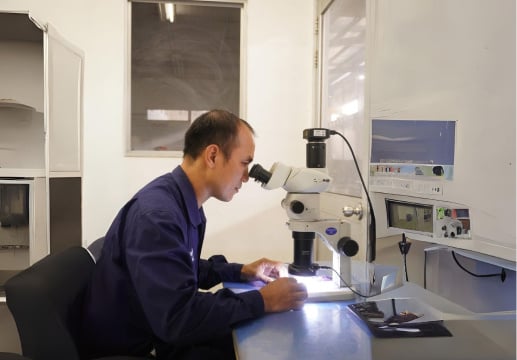To ensure optimal efficiency and prevent the risks of property damage, it is crucial to use Daiwa Thermic Lance correctly. By anticipating and avoiding mistakes, we can save costs, reduce risks, and improve overall productivity. In this blog post, we will help you to gain valuable knowledge on effectively utilizing Daiwa Thermic Lance, empowering you to eliminate unnecessary errors and associated risks that can unfortunately happen.
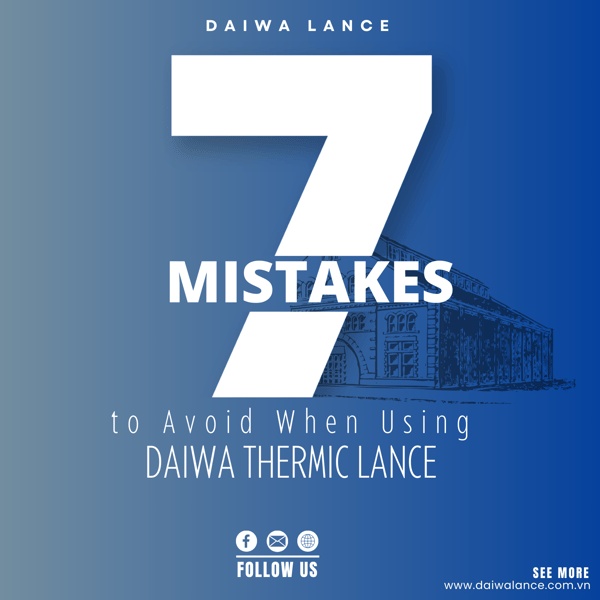
Wrong Oxygen Pressure
%207%20Mistakes%20to%20Avoid%20When%20Using%20Daiwa%20Thermic%20Lance.png?width=400&height=400&name=(1)%207%20Mistakes%20to%20Avoid%20When%20Using%20Daiwa%20Thermic%20Lance.png)
Making the incorrect decision regarding oxygen pressure at the start can result in undesirable outcomes. The optimal pressure varies based on the lance's diameter, thickness, length, and type. By understanding these variables and selecting the right oxygen pressure, we can ensure a high flow of oxygen and maximize effectiveness. For example, for OD 17.3 mm (10A), the pressure should be set between 8-10 bar. OD 13.8 mm (8A) requires 7-8 bar, and OD 21.7 mm (15A) falls within 10-12 bar.
Wrong Ignition Method
%207%20Mistakes%20to%20Avoid%20When%20Using%20Daiwa%20Thermic%20Lance.png?width=400&height=400&name=(2)%207%20Mistakes%20to%20Avoid%20When%20Using%20Daiwa%20Thermic%20Lance.png)
Having a firm grasp on the technique of igniting and maintaining the flame is a fundamental skill that provides us with an absolute confidence when utilizing Daiwa Thermic Lance. Without an experienced operator, maintaining the perfect balance between a strong flame and proper combustion can be quite a challenge. It is important to position the material being burned at an optimal distance – too close and the flame will be extinguished, too far and it becomes inefficient. For utmost safety, it is highly recommended to maintain a suitable distance at a 60-degree angle. Additionally, factors such as cutting direction, cutting technique, and the risk of splattering slag and molten metal should also be taken into consideration.
Neglect Safety Gear
%207%20Mistakes%20to%20Avoid%20When%20Using%20Daiwa%20Thermic%20Lance.png?width=400&height=400&name=(3)%207%20Mistakes%20to%20Avoid%20When%20Using%20Daiwa%20Thermic%20Lance.png)
- Not wearing goggles can lead to slag entering the eyes, causing eye damage.
- Without gloves, there is a risk of burns from the heat.
- Lack of heat-resistant clothing results in discomfort and a lack of confidence during cutting operations.
To protect ourselves from injuries, minimize exposure to hazards and lower the likelihood of occupational accidents, it is best to wear complete safety gear that aligns with safety regulations and standards.
Read More: Step-by-step Guide to Operate Thermic Lance with Safety and Effectiveness
Lack of Firefighting Equipment
%207%20Mistakes%20to%20Avoid%20When%20Using%20Daiwa%20Thermic%20Lance.png?width=400&height=400&name=(4)%207%20Mistakes%20to%20Avoid%20When%20Using%20Daiwa%20Thermic%20Lance.png)
The absence of firefighting equipment can create a hazardous situation when handling Daiwa Thermic Lance. In the event of an incident, such as a fire or explosion, having firefighting equipment readily available is crucial for timely response and maintaining the safety of the facility.
Without readily available fire extinguishers or other firefighting tools, the risk of fire or explosion, and even potential damage to equipment and the manufacturing facility, can significantly increase.
Additionally, training employees on how to use these tools is an integral part of a comprehensive safety protocol when working with Daiwa Thermic Lance.
No Risk Assessment
%207%20Mistakes%20to%20Avoid%20When%20Using%20Daiwa%20Thermic%20Lance.png?width=400&height=400&name=(5)%207%20Mistakes%20to%20Avoid%20When%20Using%20Daiwa%20Thermic%20Lance.png)
When using Daiwa Thermic Lance to cut steel products, it is important to consider various factors that can affect the burning intensity. These factors include the size of the factory space, the type and shape of the cutting object, and the materials being cut. Failing to take these factors into account can lead to potential risks, especially in confined spaces with poor ventilation. In such environments, there is an increased risk of inhaling toxic gases from the chemical substances of the cutting objects. This lack of knowledge can result in careless handling of Daiwa Thermic Lance, causing the cutting objects to splatter and posing a danger to operators.
No Inspection for Holder
%207%20Mistakes%20to%20Avoid%20When%20Using%20Daiwa%20Thermic%20Lance.png?width=400&height=400&name=(6)%207%20Mistakes%20to%20Avoid%20When%20Using%20Daiwa%20Thermic%20Lance.png)
There are rare instances where accidents can occur, such as someone accidentally removing certain components like the anti-backfire valve and not attaching it properly to the holder.
The risk associated with using a thermic lance without an anti-backfire valve is the potential for a backfire to occur. A backfire happens when the flame travels backward into the lance, leading to a sudden and unexpected ignition within the equipment. This can result in dangerous consequences, such as equipment damage, injuries to operators, or even the initiation of a fire or explosion.
Select Incorrect Size and Type
%207%20Mistakes%20to%20Avoid%20When%20Using%20Daiwa%20Thermic%20Lance.png?width=400&height=400&name=(7)%207%20Mistakes%20to%20Avoid%20When%20Using%20Daiwa%20Thermic%20Lance.png)
Selecting an incorrect size and type for Daiwa Thermic Lance (in terms of diameter, length, and thickness) can result in safety issues like breakage or bending, insufficient heat generation, reduced lifespan, and challenges with machine compatibility. To minimize these risks, it is essential to meticulously choose a Daiwa Thermic Lance that fits the intended specifications.
Conclusion
By understanding the correct usage of Daiwa Thermic Lance, being aware of common mistakes, and fully grasping the characteristics of the machinery, we can optimize overall efficiency for the factory while ensuring the safety of operators. Get in touch with us today to tap into the limitless possibilities of Daiwa Thermic Lance, leverage its advantages, and gain invaluable support from our team of experts.
- Category:
- Daiwa Lance Products


